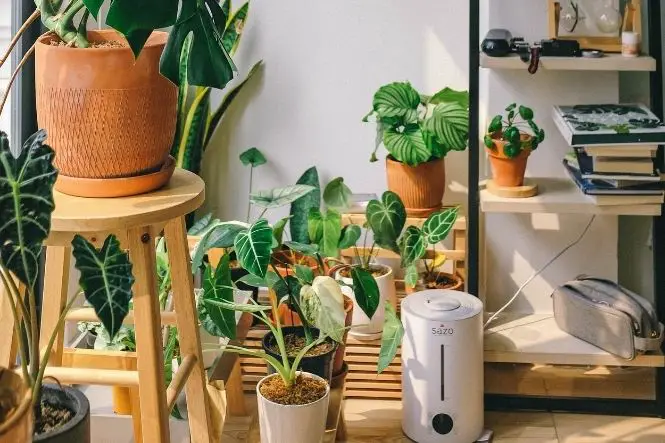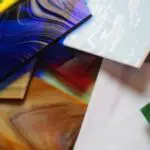Do plants breathe? Yes and no… Breathing and respiring are two different things. Mammals, including humans, breathe by using muscles to pull air into the lungs and push it out, which brings oxygen to the blood and gets rid of carbon dioxide. The blood takes the breathed-in oxygen round the body, where it is used by the cells, and takes waste carbon dioxide back to the lungs, where it is breathed out.
The process of cells using oxygen and getting rid of carbon dioxide is called respiration. Plants have very small holes on the underneath of leaves, called stomata, which let the carbon dioxide and oxygen in and out in a process called diffusion.
Plant cells respire as well, using oxygen and getting rid of carbon dioxide. Plants also use carbon dioxide when they make food from the sun’s energy and this makes oxygen – this is called photosynthesis. During the day, the plant cells photosynthesise more than they respire, so they get rid of more oxygen than carbon dioxide.
During the night, the plant cells respire more than they photosynthesise, so they get rid of more carbon dioxide than oxygen. People used to think that they should not keep plants in bedrooms at night in case the plants used up all the oxygen, but the amount used is too small to make any difference.
Stomata
The holes on the underneath of leaves, stomata, have guard cells that open and close so that the plant does not lose too much water. These stomata might be visible under a microscope – take a leaf, hold it the right way up, then fold it in half downwards until it cracks, and peel a piece of the thin skin (epidermis) from the bottom. Try it again with a piece of epidermis from the top – are there any stomata on the top? Do the stomata look different in different kinds of leaves? Are there different numbers of stomata in different kinds of leaves?
Another way to look at stomata is to paint a small area (about a square centimetre) with clear nail varnish, let it dry, cover it with a larger piece of clear sticky tape and then carefully peel it off – the nail varnish will have an imprint of the stomata. Try this on the top and the bottom of the leaf.
To see what the stomata do, cover one leaf on a plant with a thick layer of petroleum jelly on the top and another with a thick layer on the bottom, and watch the leaves for a week. What happens to the leaves?
Producing Oxygen
A plant called Elodea canadensis, a pondweed, is sold in many pet shops and tropical fish shops because it produces so much oxygen during photosynthesis it helps to oxygenate the water in fish tanks.
Fill a tank or a glass bowl with water and leave it out for a couple of days to get rid of any chlorine. Put a small bunch of pondweed in the tank. Lower a glass jar into the tank, let it fill with water and then put it upside-down over the pondweed. Leave the tank in the sun and count the bubbles that come off the pondweed over a five-minute period. See how much oxygen collects at the top of the jar in a day.
Try the experiment in a light place but out of direct sun, and in the dark. Does this affect the number of bubbles and the amount of oxygen produced? If there is gas produced in the dark, do you think this is oxygen or carbon dioxide?




